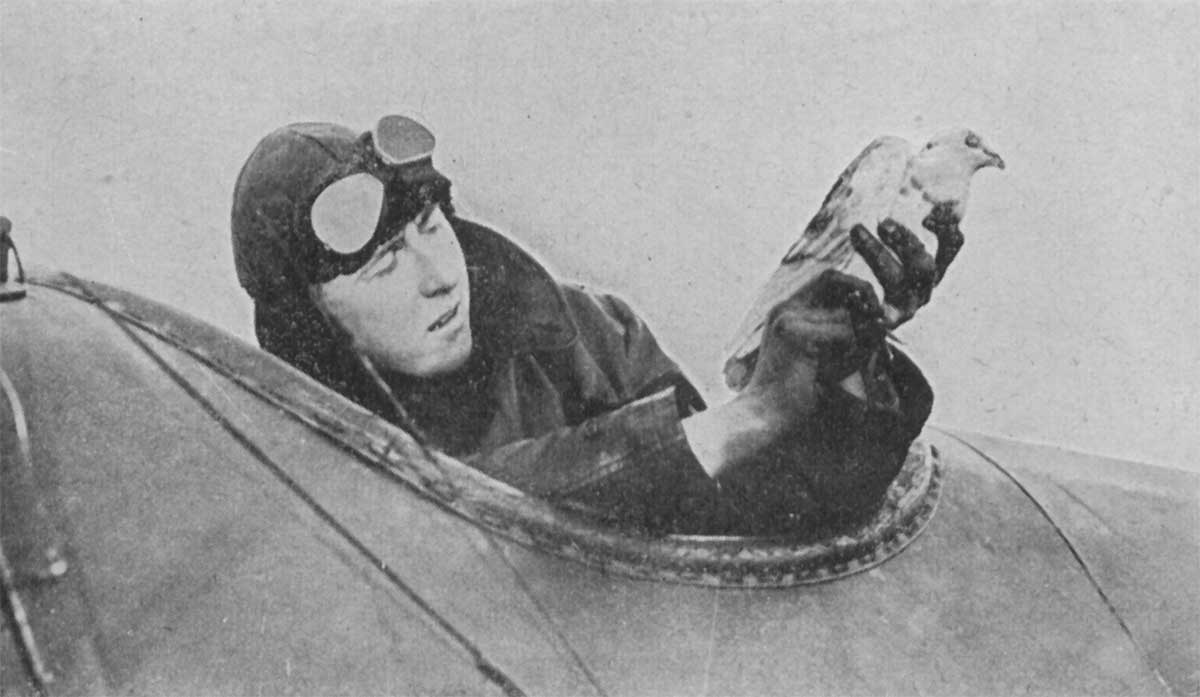 Another in a regular series of fascinating, intriguing, or thoughtful tales about people and places in Nado history — presented by your Coronado Historical Association
Another in a regular series of fascinating, intriguing, or thoughtful tales about people and places in Nado history — presented by your Coronado Historical Association
In the early 1920s Army and Navy aviators at North Island were among the world’s leaders in experiments perfecting wireless radio transmissions from the air. Not everyone viewed these exciting breakthroughs, though, as a positive step. And Coronado’s carrier pigeons were sure to have viewed wireless with some trepidation.
Just as North Island had become a national center for radio experiments, it was also one of the Armed Forces’ largest centers for carrier pigeons that populated at least four pigeon lofts situated along the western edge of the base.
Carrier pigeons came into some renown during World War I for their use in carrying battlefield messages. They were especially useful for aviators who were forced down and needed to send their position back to their units. Planes began to routinely carry pigeons held in small containers either on the wings or tucked behind the pilot’s seat.
From 1918 to the mid-twenties it was basic policy for every Army or Navy aircraft or lighter-than-air craft to carry pigeons.
Pigeons at the North Island Pigeon Station probably numbered more than 200. They were exercised daily and carefully bred. It is hard to visualize all the pigeon activity that happened every day, but the plump and gray aerialists demanded constant attention and there was always a need for replacements and new training.
At North Island, a Navy lieutenant was officially in charge of the station but it is not obvious if this was a position that many aspired to or one assigned as a form of punishment.
Training for North Island pigeons started with short flights from parks in Coronado back to the station. Once the fledgling birds had that routine down, longer flights were attempted including pigeon races with private pigeon clubs throughout Southern California.
The Navy even designed pigeon coops into its first aircraft carrier, Langley (CV-1), which was based in Coronado beginning in 1924. Note two open windows at stern.
 One interesting Coronado pigeon story surfaced in 1926. Apparently, a North Island pigeon had been released well to the north but, for some reason, weakened during his flight home. As the bird flew through Oceanside, he spotted a southbound automobile and finished the final forty miles of his journey chauffeured.
One interesting Coronado pigeon story surfaced in 1926. Apparently, a North Island pigeon had been released well to the north but, for some reason, weakened during his flight home. As the bird flew through Oceanside, he spotted a southbound automobile and finished the final forty miles of his journey chauffeured.
By the late 1920s, the era of pigeons was graying with the rapid advance of airborne communications and the soft cooing of legions of pigeons would soon disappear from the Coronado landscape.
The Navy repurposed Langley’s pigeon loft as well, turning it into quarters for ship’s executive officer and opening unending jokes about an officer “ruling the roost.” (BL)
Photos courtesy U. S. Navy and National Archives. www.coronadohistory.org © CHA




